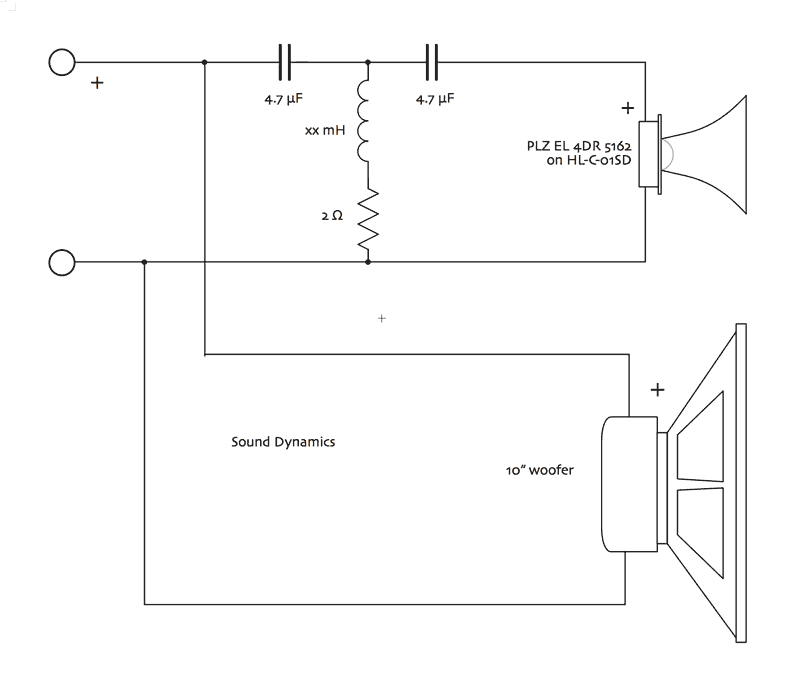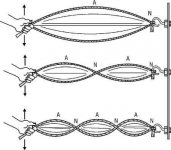If it was a sealed box you would fill with damping, with a vented box you line the walls.
dave
So then it'll have to be be a search for the best damping material for the least expense??
I have a different take on damping a vented box. 1-2" may not always be enough to dispatch the box modes (standing waves).
There is a concern that too much damping material will diminish the vented resonance, but there are a few reasons I can suggest to instead use enough damping material to deal with the standing waves and not stress as much about the bass alignment. (Note that I'm not saying you have to stuff the whole box, less than half should be plenty).
1. Damping material doesn't work as well at the bass frequencies.
2. Higher frequency issues are generally more important and standing waves are more complicated in nature.
3. The bass resonance can reasonably be compensated by re-tuning, equalising, room position etc. etc.
There is a concern that too much damping material will diminish the vented resonance, but there are a few reasons I can suggest to instead use enough damping material to deal with the standing waves and not stress as much about the bass alignment. (Note that I'm not saying you have to stuff the whole box, less than half should be plenty).
1. Damping material doesn't work as well at the bass frequencies.
2. Higher frequency issues are generally more important and standing waves are more complicated in nature.
3. The bass resonance can reasonably be compensated by re-tuning, equalising, room position etc. etc.
Thanks Allen
How would you go about half filling the box and at the same time not obstruct the bass or the vent?
Would you pack around the tweeter, and line around the woofer?
Not sure of the payout you're suggesting.
thanks Cliff
How would you go about half filling the box and at the same time not obstruct the bass or the vent?
Would you pack around the tweeter, and line around the woofer?
Not sure of the payout you're suggesting.
thanks Cliff
Last edited by a moderator:
Probably fiberglass insulation, see if you can find some 1-2” thick.
dave
Thanks Dave.
I picked up an electric knife which I could use to slice batts into a given thickness.
Whatever amount you decide, be it 20%, 30% etc.. have this much of the top to bottom, side to side and back to front dimensions covered.How would you go about half filling the box and at the same time not obstruct the bass or the vent?
One way you can avoid crowding the driver and port is to put it all in the top and back, rather than the bottom and front.. assuming the driver is in the middle and the port is at the bottom.
The other effect I was talking about..
..will be covered by this arrangement. The higher (middle) frequencies get tangled up bouncing between the surfaces. This causes hot spots and nulls that vary with frequency and may cause a rough response. Dealing with this requires for example that at least one surface of each opposing pair is covered.Not sure of the payout you're suggesting.
Attachments
Whatever amount you decide, be it 20%, 30% etc.. have this much of the top to bottom, side to side and back to front dimensions covered.
One way you can avoid crowding the driver and port is to put it all in the top and back, rather than the bottom and front.. assuming the driver is in the middle and the port is at the bottom.
The other effect I was talking about....will be covered by this arrangement. The higher (middle) frequencies get tangled up bouncing between the surfaces. This causes hot spots and nulls that vary with frequency and may cause a rough response. Dealing with this requires for example that at least one surface of each opposing pair is covered.
Hi Allen.
The illustration and description has thrown me a little.
Not sure how it relates to insulation layout.
The front panels of the enclosures in question house a tweeter in the top 20%, then a 10" woofer in the next 60% and a vent in the bottom 20%.
Using your description do I line the entire box (top, bottom, sides, front and back, but in the top 20% where the tweeter is I also stuff this section so its volume is filled?
Also, will this lead to a tweeter overheating situation given the lack of open space around the driver?
thanks
C
The illustration was not shown to demonstrate how to place your stuffing, but rather to show that there is an effect which you want to suppress.
Don't worry about your tweeter, it will deal with its own heat.
Don't worry about your tweeter, it will deal with its own heat.
nothing i can recommend my past experiences with ferrofluid cooled tweeters is why i currently avoid them, sorry.
I have a different take on damping a vented box. 1-2" may not always be enough to dispatch the box modes (standing waves).
The key take-away here is that it is often worthwhile playing around a bit.
In our (not-normal) reflex boxes we have found that 1/2” cotton felt, plus some optional lower density damping on (and over the holes) the holey brace have been sufficient.
That comment does point out that the walls are not actually the best places to put damping to kill HF. That place is in the moddle of the box and one might want to do a 3D set of orthogonal set of damping sheets (hard to imagine how one would actiualy execute that without a set of full width/height/depth braces to hang it on.
dave
Is there a schedule and service procedure available?
Unless the tweeter has suffered significant thermal overload (usually killing it) the ferrorfluid does not go anywhere or fade with time.
dave
I agree, this is not only convenient but has technical merit, broadly speaking.on (and over the holes) the holey brace
Hi Dave.
The illustration shows duct seal having been moulded between the chassis and magnet area.
What about the chassis ribs?
Should duct seal be also moulded along the ribs to prevent chassis vibration?
thanks
Cliff
What about the chassis ribs?
I have done that too, but its effectiveness is basket dependent. The big wad at the magnet junction kills almost all the vibration in most baskets, larger basket may benefit more with damping out the legs. The ductseal provides damping, and shaping/smoothing the exit at the rear of the driver.
Wool/cotton felt can also be added to the insides of the basket legs, and sometimes a suspended ring between the cone & the spider, but that is mostly beenficial for FRs.
dave
I just pulled a pair of those tweeters off teh shelf to go into the freebie pile, pretty sure anyway, would need to see a picture of the dome. Orangish IIRC.
Prettier XO diagram

dave
Hi Dave.
Although the schematic shows 2 x 4.7 MFD Caps, the actual crossovers feature a smaller 4.7mfd 100v BPT cap and a larger 4.7K 250v Intercap cap.
Is 4.7K another way of describing 4.7mfd?
Also the circuit illustrates a 2 ohm resister.
Do I go for 5W or a 10w resister?
thanks
Cliff
A 250v cap will be larger than a 100v.
100v caps are fine, but often poly caps are hard to find with that voltage rating. 50v is probably fine. Get 4 of whatever you can find.
5w Rs are also probably OK, but 10 wouldn’t hurt. Non-inductive if you want to splurge.
dave
100v caps are fine, but often poly caps are hard to find with that voltage rating. 50v is probably fine. Get 4 of whatever you can find.
5w Rs are also probably OK, but 10 wouldn’t hurt. Non-inductive if you want to splurge.
dave
- Home
- Loudspeakers
- Multi-Way
- SoundDynamics Loudspeaker Crossover upgrade??
